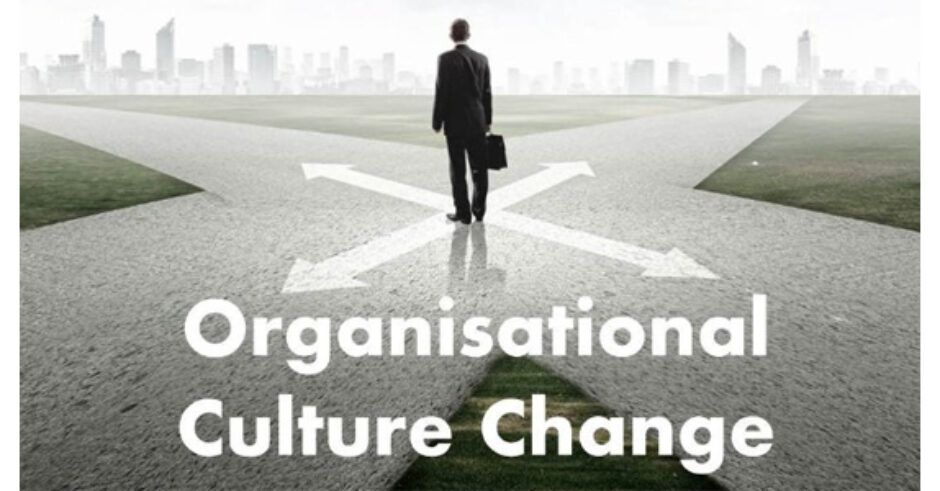I have been meaning to tackle this issue for some while now because I have to admit that I do not fully comprehend the concept “organisational culture change” so I am using it as a bit of a learning exercise. I have also seen a few articles on the subject of late and I wanted to add my 10 cents worth to the debate.
So here goes.
Eremedia/TLNT highlighted a Booz Allen “culture study” that came up with these interesting statistics:
- 84% of respondents and 86% of C-Suite respondents believe that their organization’s culture is critical to business success.
- 60% said culture is more important than the company’s strategy or operating model.
Great … I fully agree with those but:
- 96% said some form of culture change is needed within their organization.
- 51% believe their organization is in need of a major culture overhaul.
- 45% do not think their culture is being effectively managed.
- 48% do not think they have the capabilities required to deliver lasting change.
OMG … 96% said some form of culture change is needed within their organisation!!! Clearly, they see there is something fundamentally wrong and want to improve it. But such a high percentage … staggering!
But what exactly is Organisational Culture?
The Business Dictionary describes it this way:
The values and behaviours that contribute to the unique social and psychological environment of an organization.
Organizational culture includes an organization’s expectations, experiences, philosophy, and values that hold it together, and is expressed in its self-image, inner workings, interactions with the outside world, and future expectations. It is based on shared attitudes, beliefs, customs, and written and unwritten rules that have been developed over time and are considered valid.
It affects the organization’s productivity and performance, and provides guidelines on customer care and service, product quality and safety, attendance and punctuality, and concern for the environment.
All clear then! Given the above, you can imagine that why embarking on an Organisational Culture Change initiative is so damn difficult! And just to add… In a 2016 interview called “20 Organizational Culture Change Insights from Edgar Schein” by Culture University. He cites the following four culture fundamentals:
- Don’t over-simplify culture. It’s far more than “how we do things around here.”
- Focus on a problem and how culture is influencing it instead of trying to change culture directly.
- Culture is always helping and hindering problem-solving. It’s important to understand both.
- Be very specific about behaviour, how it’s impacting your problem and the future state of the behaviour you want to see.
There is also an interesting slant on organisational culture from CultureQS:
In organisational life, the seven layers form the core. And, like culture itself the manner in which they influence changes continuously.
Conversations about culture, and especially so-called “training courses” on the theme of culture, frequently ignore one essential: it is always an individual who interacts, not a culture.
Cultures can’t interact … culture is merely a notion. … People interact!!!
We do not encounter and engage with each other as representatives of a specific cultural group.
We engage in a context, as individual whole beings: humans, with our personal history, experience, influencers, intrinsic motivators.
But just how difficult is Organisational Culture Change?
Let’s look at what some “leading lights“ of the business world have to say on the subject:
In their article of 2015 called “Changing an Organization’s Culture, Without Resistance or Blame” is says:
One of the biggest challenges a company can face is changing people’s behaviour — getting them to collaborate and be humble, for example, or put the company’s long-term interests first. Most behaviour-change initiatives accomplish little, at best.
In their article of 2011 called “How Do You Change an Organizational Culture?” it states:
Changing an organization’s culture is one of the most difficult leadership challenges. That’s because an organization’s culture comprises an interlocking set of goals, roles, processes, values, communications practices, attitudes and assumptions.
Changing a culture is a large-scale undertaking, and eventually, all of the organizational tools for changing minds will need to be put in play. However, the order in which they deployed has a critical impact on the likelihood of success.
In their article called “How to Change Your Organization’s Culture“of an unknown date it states:
As a manager, you may have the power to change your organization’s policies with the stroke of a pen. And you may have the ability to hire, fire, promote and demote people with relatively little effort.
But changing an entrenched culture is the toughest task you will face. To do so, you must win the hearts and minds of the people you work with, and that takes both cunning and persuasion.
In their article of 2013 called “Culture’s Critical Role in Change Management” it says
Our own work suggests that the problem is one of mindset. Companies facing cultural challenges often think the answer is to try to transform their cultures by using traditional change-management tactics. But cultural situations are complex and rarely lend themselves to change through the same mechanisms or at the same pace as other parts of an organization.
All good stuff highlighting the challenges and complexities of culture change, but the burning question for me is … can you do culture change in its own right or is culture change a sub-set/part of a bigger change programme?
Update … here is an interesting video from strategy Business called “What Is Corporate Culture?“
A personal example (this will be one of my case studies forming part of my Life & Times series).
I have never undertaken a stand-alone culture change programme. However, I have certainly had “culture” impact what I have done where a change impacts two or more parts of an organisation who have their own distinctive … I‘ll call them “ways of working” … which of course can be interpreted as “culture”.
To give you an example I worked for a large UK telecoms provider who were using SAS as their analytics platform. The role was to support a technology change to facilitate the development of a Target Operating Model and New Ways of Working for a new Strategic Enterprise Environment and roll it out across the Business and IT teams.
The key objectives were to:
- Address the performance and stability concerns of the current SAS environment through the delivery of a new performant, resilient, expandable and stable solution including a test & recovery capability.
- Deliver the new environment with up to date versions of application software.
- Establish a technical support model with agreed SLA’s for the new environment.
- Provide an environment that will support the existing workload and cater for organic growth within the business teams (not additional functionality).
- Deliver an infrastructure that was an enabler for future growth and usage.
The main problem was that the Business Team had long since had control over the SAS environment (mainly one individual) and that the IT Team had little or no knowledge of how it was being used.
Some weeks into the project it was apparent that the main challenges were to:
- The first and most important aspect was to understand the way the Business Team used the environment, that is, get them to record their processes.
- Once this was done to get both teams to determine and agree which processes they would manage as part of the new Enterprise Environment Strategy
Easy for you to say!!!
Unfortunately there was a distinct lack of trust and little or no engagement between the two teams and just getting them to sit together and discuss the processes was a major challenge … “we don’t have time”, “we still don’t have enough information”, “business, as usual, takes priority” were some familiar phrases.
Another challenge was that the Business Teams were located in London and the IT Team was located in Bristol … over 100 miles apart.
Anyway to cut a long story short … eventually, I was successful in getting both teams together, through joint workshops and engagement meetings, an agreement was reached as to who would do what but it wasn’t easy given the organisation’s cultural differences.
Culture Change Models/Methodologies.
For those who know me through my frequent articles and comments to posts, I am not the greatest lover of models or methodologies but it would be remiss of me not to mention some tools and tips related to organisational culture change.
- Don’t try unless you are serious.
- Be clear about outcomes and benefits.
- Involve people in an organisation-wide conversation.
- Role model from the top.
- Adopt the 80/20 rule when it comes to changing processes.
- Measure what is changing and how it is changing.
- Reward good behaviour.
- Communicate like never before.
- Link the customer into the change process.
- Manage symbolism.
9 Clear Steps from Eremedia, Talent Management & HR
Define
- Step 1 – Evaluate your current culture and performance.
- Step 2 – Clarify your initial vision.
- Step 3 – Clarify values and expected behaviours.
Align
- Step 4 – Clarify strategic priorities.
- Step 5 – Engage your team in defining SMART goals.
- Step 6 – Clarify and track key measures.
Manage
- Step 7 – Maintain a management system for priorities and goals.
- Step 8 – Manage communication habits and routines.
- Step 9 – Build motivation throughout the process.
6 Tips from the Huffington Post
- Understand your current culture.
- Understand your position.
- Start a dialogue.
- Don’t boil the ocean.
- Align systems and processes.
- Be a role model.
And finally, the following are some examples of large-scale culture change successes (so it does work):
Tony Hsieh sold earthworms, greeting cards, and slices of pizza. Along the way, he never considered that a failed business meant he was a failure. Then, the guy who wore the same pair of shoes founded Zappos. Today, Tony says it’s all about Happiness, and he’s got the business to prove it.
For the full article click here.
Update … to add to this here is an interesting article from Business Insider called “A former Zappos manager explains how her job changed after the company got rid of bosses“.
This case study looks at how Jaguar, one of the world’s most prestigious car manufacturers, has been involved in a culture change programme to create new ways of working for the twenty-first century.
For the full article click here.
Atlassian is built on the bright ideas and efforts of our team because we’d grow stagnant as a company if we relied only on the ideas of a select and blessed few. Indeed, our long-term survival depends on our ability to continuously improve through change.
For the full article click here.
So there we have it my take on Organisational Culture Change. Is it difficult? Is it something to take on in its own right? Can you change culture “top down” or “bottom up”?
It would be great to hear your views.




